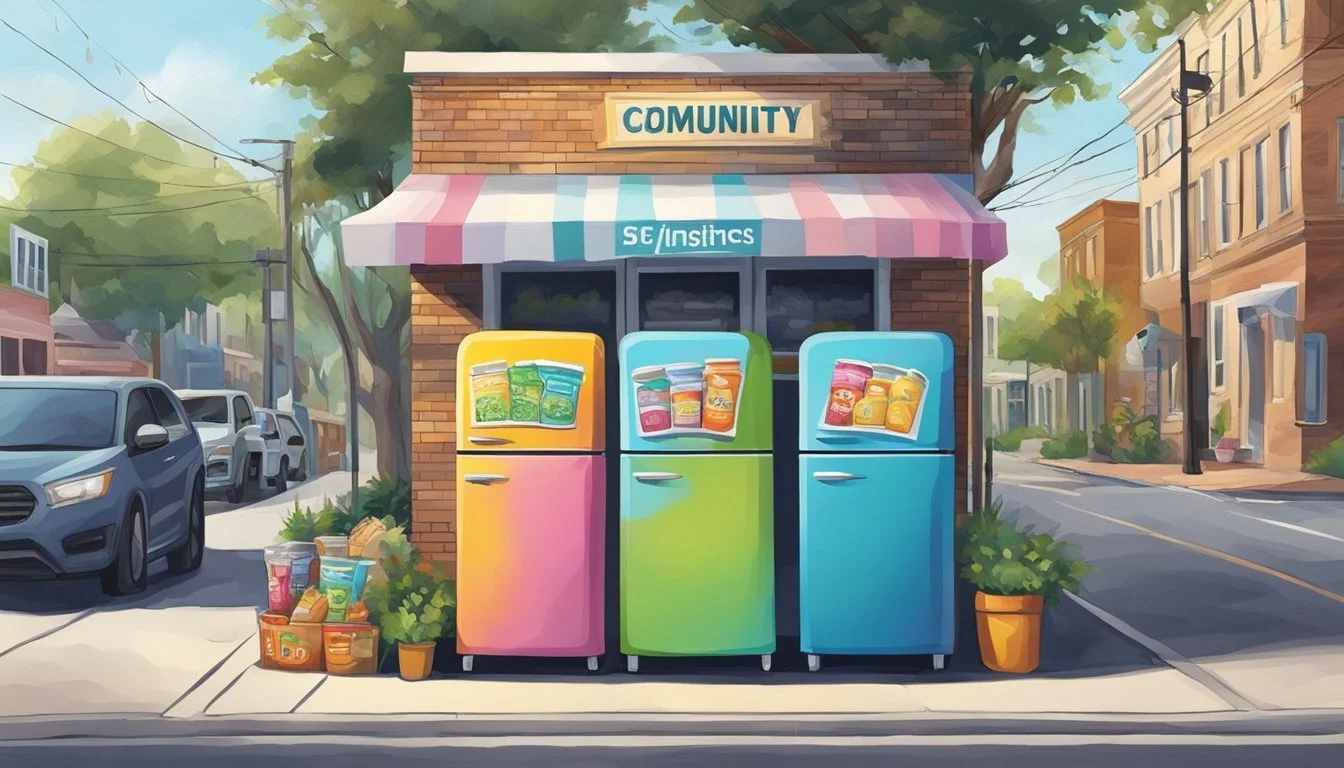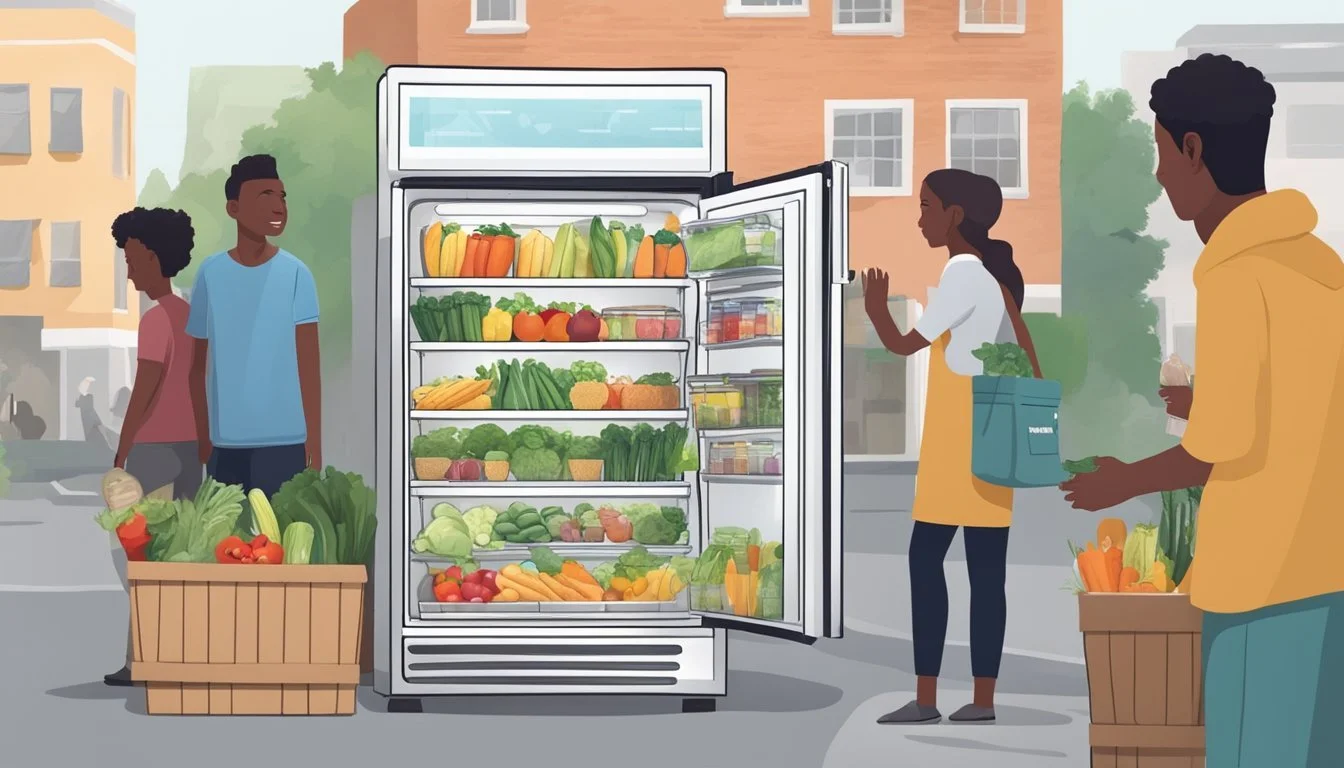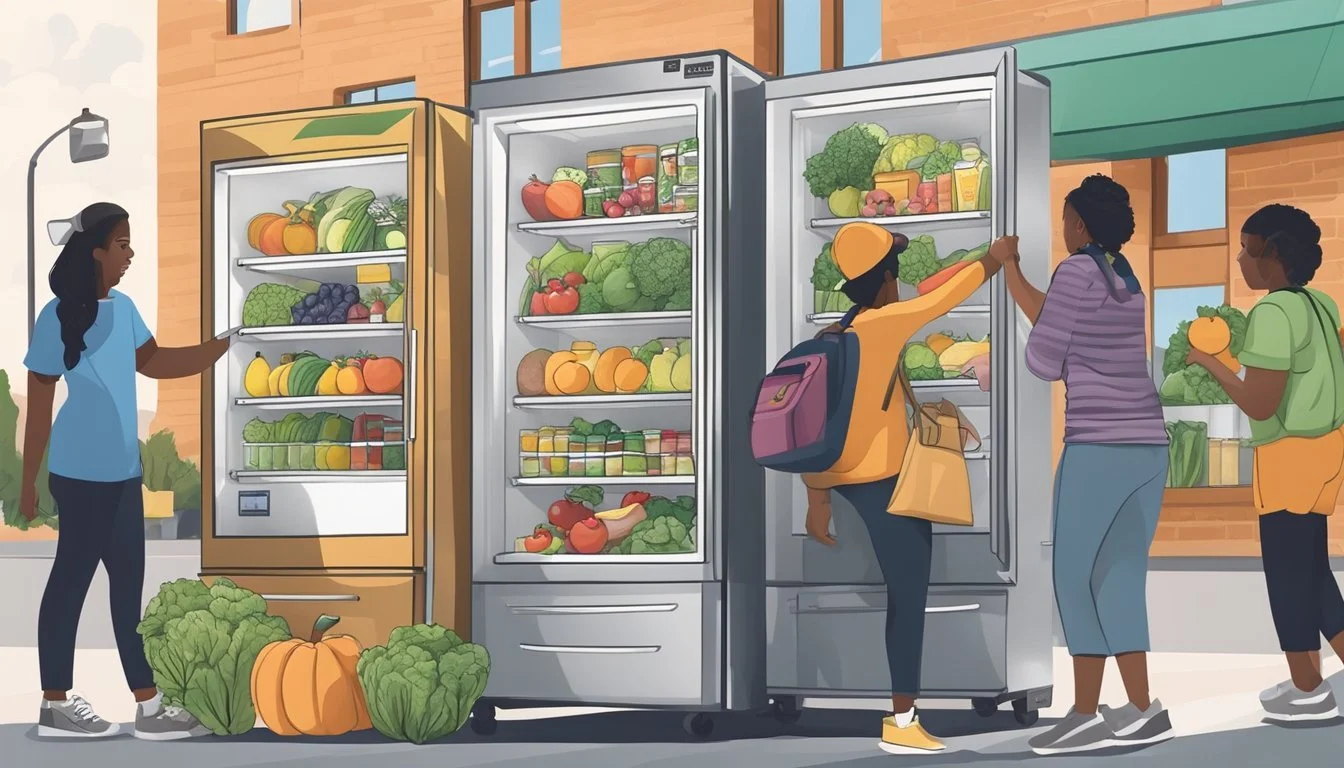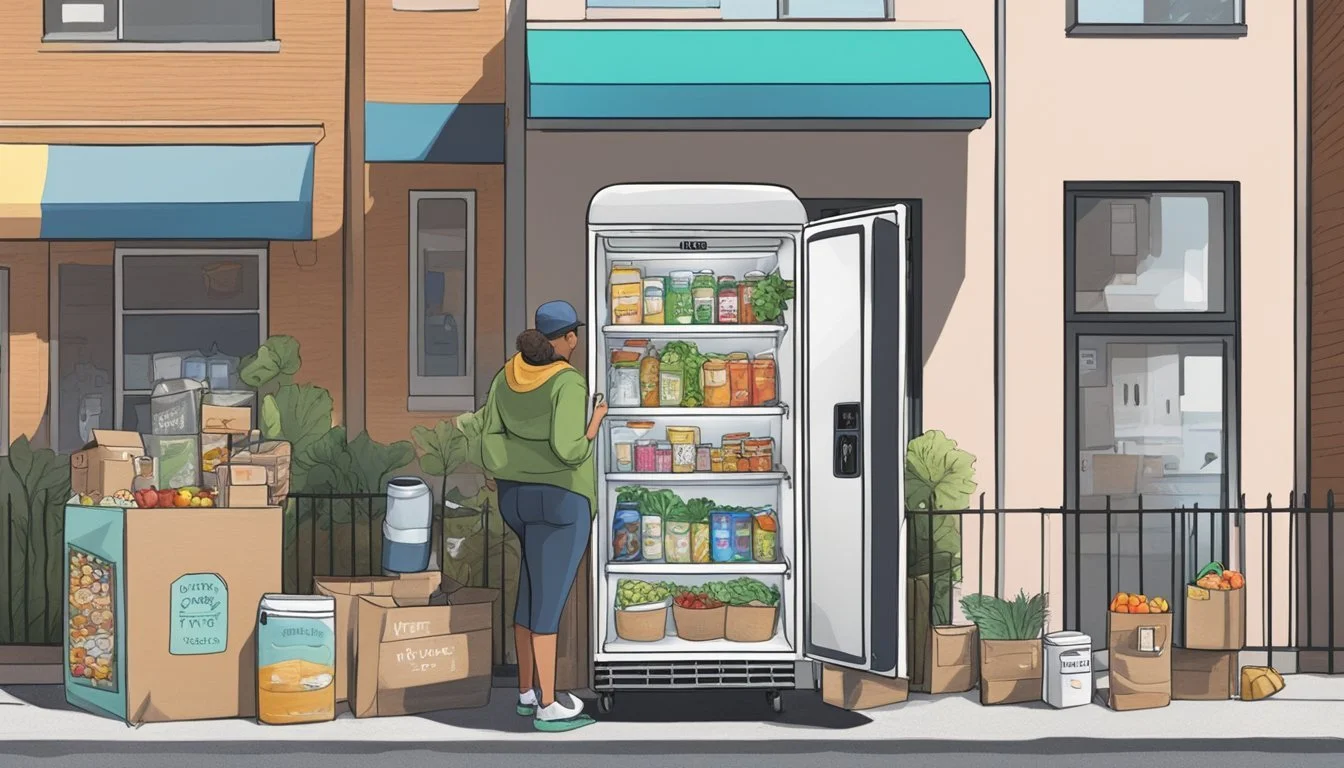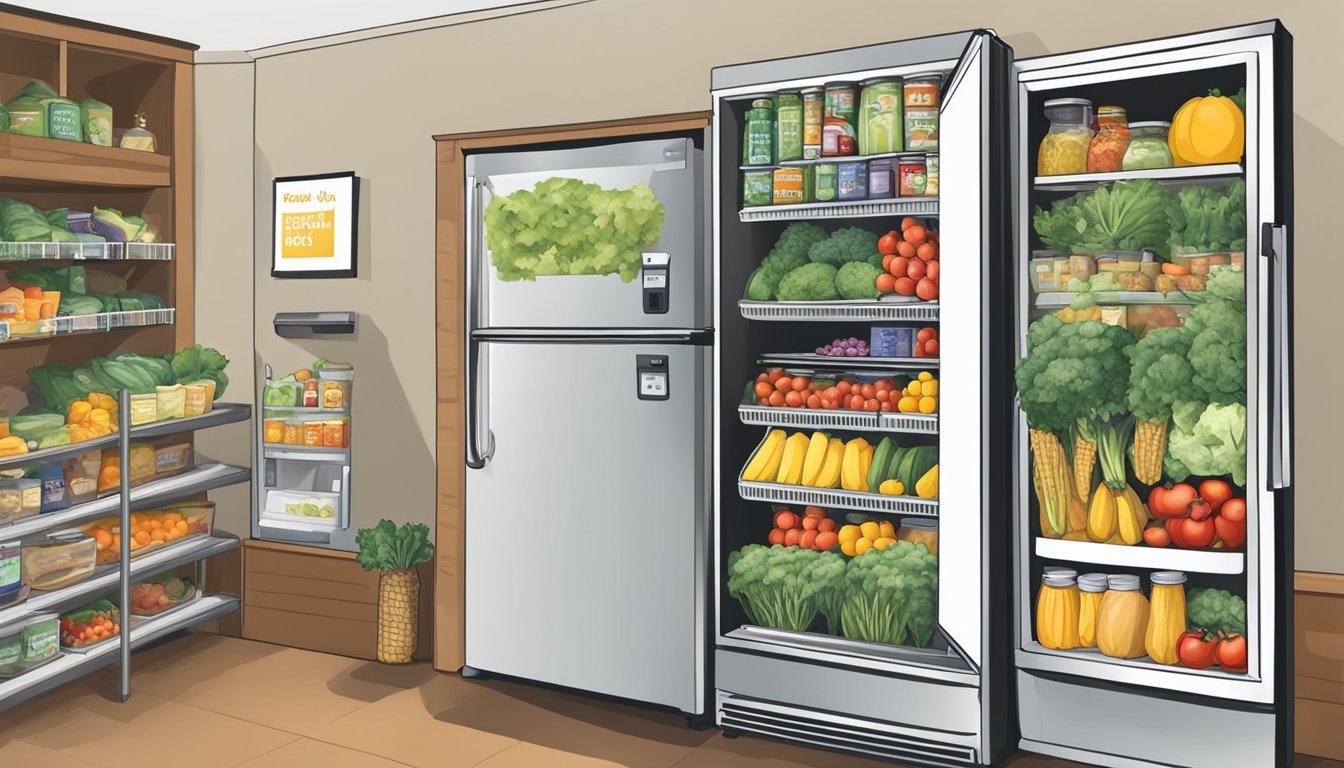Wilmington, NC Community Fridge
Nourishing Neighbors with Fresh Food Access
In Wilmington, North Carolina, the issue of food insecurity is being addressed with an innovative and community-driven approach: the introduction of a community fridge. This community fridge, accessible to all residents, operates on the principle of taking what you need and leaving what you can. It functions as a hub for donated produce, prepared meals, and other food items, enabling individuals and families facing hardships to access fresh and nutritious food without any cost.
The concept has garnered support from local organizations and businesses, recognizing the importance of collective action in combating hunger. Strategically located at points accessible to the public, such as the Kingswood Community Center, these refrigerators are filled with contributions from local gardeners, supermarkets, and community members. This act of collective responsibility not only addresses the immediate need for food but also fosters a sense of solidarity and support within the Wilmington community.
Critical to the success of the community fridge in Wilmington is the ongoing maintenance and restocking, ensuring a reliable source of food for those in need. Inherent in this endeavor is the underlying goal of reducing food waste, encouraging a sustainable way for excess food to reach those who would benefit from it the most, rather than going to waste. The Wilmington community fridge is more than just a place to share food; it is a symbol of community resilience and kindness.
Concept of Community Fridges
Community fridges are a novel approach to addressing food insecurity through easily accessible and shared food resources. These initiatives generally operate on a take-what-you-need, leave-what-you-can basis and are often managed by nonprofit organizations or community groups.
Understanding Community Fridges
Community fridges are refrigerators placed in public spaces where individuals or families can access free food, particularly fresh produce and perishables. They serve as a communal point where residents can donate edible items, ensuring access to quality food for those in need. The underlying principle is simple: to offer and share resources within the community, thereby helping to alleviate food insecurity.
Benefits of Community Fridges
Reduced Food Waste: Donations often consist of surplus food that would otherwise go to waste.
Improved Diet Quality: By providing fresh, nutritious options, community fridges can improve diet quality among recipients.
Community Solidarity: These fridges foster a sense of community spirit and mutual aid.
Global Spread
From a modest number of fridges in the United States, the concept has experienced a substantial expansion. By leveraging the power of community engagement and the support of various nonprofits, community fridges can now be encountered across multiple countries, demonstrating the global recognition of their potential in mitigating food insecurity and their effectiveness in providing access to quality food.
Wilmington's Response to Food Insecurity
Wilmington has taken significant strides to tackle the challenge of food insecurity, employing various strategies involving local nonprofits and community-based initiatives.
Wilmington, NC Efforts
The city of Wilmington, North Carolina, recognizing the critical issue of food deserts within its geographical scope, has allocated funds strategically to combat the situation. Wilmington's commitment is evident through its support of local organizations. For example, the city pledged $200,000 to entities working towards addressing food insecurity. These funds are allocated to enhance the infrastructure that improves access to quality food for residents.
Local Nonprofit Involvement
Nonprofits have been an integral component in Wilmington's holistic approach to food insecurity. The Food Bank of Central and Eastern North Carolina, armed with community support and significant donations, is set to expand their operations with the new nCino Hunger Solutions Center. Such local nonprofit involvement is pivotal in sustaining food relief efforts and the operation of community fridges that serve as immediate food sources.
Planting to Feed Initiative
A grass-roots level initiative, Planting to Feed, involves local individuals and groups cultivating gardens to not only provide fresh produce to those in need but also to foster community engagement and education about sustainable practices. This initiative reflects Wilmington's innovative steps towards ensuring that every resident has the chance to obtain fresh and nutritious food.
Establishing a Community Fridge in Wilmington
The foundation of a community fridge in Wilmington centers around strategic site selection and mobilizing community and organizational support. This ensures the fridge is both accessible and sustainable.
Location and Accessibility
The launch of Wilmington's first community fridge required carefully considering the location for maximum reach and convenience. Clarendon Park was chosen as an optimal neighborhood for its visibility and the community's need for easy access to fresh food. Kingswood Community Center, another embodiment of community care, houses a community fridge initiative by Reach Riverside, that doubles as a social hub, making it a spot residents frequently visit.
Partnerships and Support
The establishment and ongoing success of community fridges in Wilmington are bolstered by partnerships and support from local stakeholders. The Warehouse, a community center focused on empowering the youth, plays a significant role in supporting the endeavours of the community fridge by providing space and resources. Partnerships like the one with Reach Riverside, a community development corporation, reinforce the fridge's operational effectiveness through funding and volunteer mobilization. In addition, grants, such as the $10,000 from AmeriHealth Caritas Delaware, lay the financial groundwork necessary to sustain the community fridge over time. These partnerships not only ensure the physical establishment of the community fridge but also fortify the project with a network of support for its continuity.
Nutritional Contributions
Community fridges in Wilmington, North Carolina, serve as pivotal nodes for supplying nutritious food to the local community. They ensure that individuals have round-the-clock access to a range of healthy food choices, which are essential for maintaining well-being.
Donations and Food Items
The contents of Wilmington's community fridges typically consist of donations from various sources. They often include:
Fresh Fruit: Apples and oranges are regular items, providing essential vitamins and fiber.
Vegetables: Potatoes and other produce offer nutrients and are versatile for cooking.
Snacks: Healthy snacks are available for quick nourishment.
Beverages: Milk and juices, which are rich in calcium and vitamin C, respectively.
Productions: Prepared meals can sometimes be found, affording convenience without compromising nutritional value.
Promoting Healthy Eating
The community fridge initiative in Wilmington not only provides food but also fosters a culture of healthy eating. It emphasizes the importance of quality food that is both accessible and free of charge. This helps address food insecurity challenges while promoting the concept that nutritious food is a right, not a privilege.
Public Involvement and Impact
The establishment of the Community Fridge initiative in Wilmington, North Carolina showcases the power of collective community efforts. This program not only helps Delawarean families in need but also fosters community engagement through various supportive activities.
Volunteer and Donation Opportunities
Volunteer Efforts
Staffing: Community members can volunteer to monitor and maintain fridge operations, ensuring that the refrigerators are clean and well-stocked.
Distribution: They can assist in the organized distribution of food, contributing to the regular replenishment of fresh produce and other items.
Donation Channels
Food Donations: Individuals and local businesses are encouraged to donate fresh fruits, vegetables, and other perishable items to keep the fridges stocked.
Financial Contributions: Nonprofits and community organizations accept monetary donations to support the logistical aspects of the Community Fridge program.
Community Impact
Support to Families
Accessibility: The refrigerators provide free and accessible food options to families in need, helping to alleviate food insecurity.
Nutrition: They offer nutritious food choices, which are important for the health and well-being of community members.
Strengthening Community Ties
Engagement: The initiative engages a wide array of community members, from those who donate to the volunteers who manage the fridges.
Unity: It brings together diverse groups, uniting them in a common goal of supporting their fellow Delawareans.
Challenges and Opportunities
The successful operation of Wilmington's community fridges hinges on addressing challenges like maintenance and sustainability, while also considering the growth potential to enhance community support systems.
Maintenance and Sustainability
Sustaining a community fridge involves ongoing maintenance and support. Community initiative is essential in ensuring the initiative is not a short-term solution but a reliable resource. Accessibility to healthy food options during the pandemic sparked the creation of community fridges. Their sustainability requires regular replenishment of food supplies, cleaning, and ensuring food safety. Volunteers and donations are the lifeblood that keeps the shelves stocked with fresh produce and essentials. Operational costs—for electricity, repairs, and other logistics—pose a challenge as they rely heavily on community funding and support.
Future Prospects for Wilmington's Community Fridges
Wilmington's community fridge initiative faces both promising prospects and the need for strategic planning. To scale up the accessibility and benefits, there must be a concerted effort to secure funding and partnerships. This ensures sustainability and the ability to weather any challenges that may arise, such as those brought by the pandemic. There is potential for the number of fridges to increase, extending the network and making fresh, nutritious food more accessible to those in need. Strategic locations and community involvement will be key in maximizing impact and maintaining the essence of the community fridge concept.
Additional Resources
Wilmington's community fridge initiative provides support for those in need of fresh food, with locations that can be easily accessed. An interactive map aids in locating the fridges, while educational material ensures proper use and ongoing community support.
Interactive Map and Finder
An Interactive Map facilitates the discovery of community refrigerators, known as Freedge locations. Residents can find the precise locations of these free food resources with a user-friendly online map. Each Community Refrigerator is marked clearly, showing addresses and any pertinent details to help users find and access them without hassle.
Educational Material
Educational Material is essential for maintaining the success and hygiene of each Community Refrigerator. It includes guidelines on what can and cannot be donated, ensuring all contributions are safe and appropriate. The material also provides instructions on how to best utilize the resources of the Freedge, aimed at both users and those wishing to support or establish a community fridge.
Local Attractions Around Wilmington's Community Fridges
Visitors and community members accessing the community fridges in Wilmington, NC, can also explore an array of local attractions that capture the city's charm and natural beauty. From historic neighborhoods to picturesque walks along the Cape Fear River, the area around Wilmington’s community fridges offers engaging activities suitable for all ages.
Popular Nearby Destinations
Historic Preservation District:
The Historic Preservation District in Wilmington is a significant draw for visitors, offering a window into the city's rich past with its well-preserved architecture and cobblestone streets.
Guided tours allow tourists to learn about local history and view the beautifully maintained homes and buildings that tell the story of Wilmington's development.
Wrightsville Beach: Known for its crystal-clear waters and spacious sandy beach, Wrightsville Beach is a favorite for both relaxation and water sports, located just a short drive from downtown Wilmington.
Carolina Beach: Carolina Beach provides a laid-back atmosphere with a vintage boardwalk, unique to the North Carolina coast, complete with shops, restaurants, and entertainment options.
Neighborhood Features
Wilmington Riverwalk:
This scenic Riverwalk along the Cape Fear River borders the historic downtown and offers visitors a charming path that includes shops, cafes, and parks, all with a view of the passing boats and the occasional riverside concert.
Riverwalk:
The Riverwalk, a part of the Wilmington Riverwalk, is essential for anyone visiting the area, enabling one to enjoy both the natural splendor of the river and the hustle and bustle of the city's historic district. It has been named one of the best riverfronts in America and is a must-visit destination in Wilmington.
Practical Information for Visitors
Wilmington, NC community fridges provide vital resources for those in need, offering access to free, healthy food. Visitors interested in the community fridge initiative or looking for housing options will find the following information essential.
Operating Hours and Contact Info
The community fridge in Wilmington operates open 7 days a week, ensuring that visitors and residents have consistent access to food. Individuals interested in utilizing the services can do so at any time without the need for an appointment. For more details or to find out how to contribute, individuals should reach out directly through the contact information provided on local community center websites.
Housing and Accommodations
For visitors seeking accommodations in Wilmington, a range of options is available. Some facilities might offer a Limited Time Move-In Package to incentivize new residents. Accommodation options include various floor plans, catering to a wide range of preferences and needs. Potential residents should contact housing providers directly to inquire about availability and to secure housing that meets their requirements.


